Jyrki Alakuijala
Computational Life: How Well-formed, Self-replicating Programs Emerge from Simple Interaction
Jun 27, 2024



Abstract:The fields of Origin of Life and Artificial Life both question what life is and how it emerges from a distinct set of "pre-life" dynamics. One common feature of most substrates where life emerges is a marked shift in dynamics when self-replication appears. While there are some hypotheses regarding how self-replicators arose in nature, we know very little about the general dynamics, computational principles, and necessary conditions for self-replicators to emerge. This is especially true on "computational substrates" where interactions involve logical, mathematical, or programming rules. In this paper we take a step towards understanding how self-replicators arise by studying several computational substrates based on various simple programming languages and machine instruction sets. We show that when random, non self-replicating programs are placed in an environment lacking any explicit fitness landscape, self-replicators tend to arise. We demonstrate how this occurs due to random interactions and self-modification, and can happen with and without background random mutations. We also show how increasingly complex dynamics continue to emerge following the rise of self-replicators. Finally, we show a counterexample of a minimalistic programming language where self-replicators are possible, but so far have not been observed to arise.
Users prefer Jpegli over same-sized libjpeg-turbo or MozJPEG
Mar 27, 2024Abstract:We performed pairwise comparisons by human raters of JPEG images from MozJPEG, libjpeg-turbo and our new Jpegli encoder. When compressing images at a quality similar to libjpeg-turbo quality 95, the Jpegli images were 54% likely to be preferred over both libjpeg-turbo and MozJPEG images, but used only 2.8 bits per pixel compared to libjpeg-turbo and MozJPEG that used 3.8 and 3.5 bits per pixel respectively. The raw ratings and source images are publicly available for further analysis and study.
Intelligent Matrix Exponentiation
Aug 10, 2020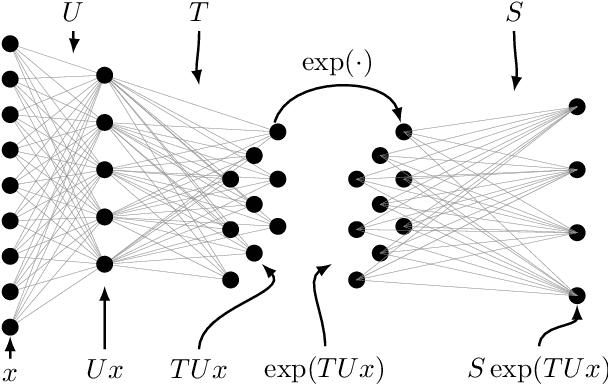
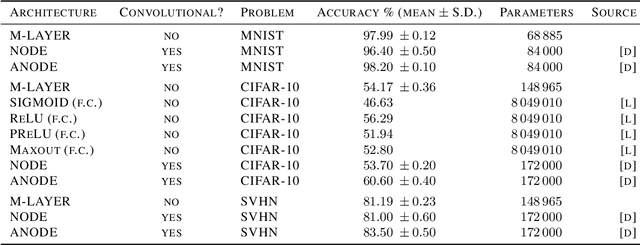


Abstract:We present a novel machine learning architecture that uses the exponential of a single input-dependent matrix as its only nonlinearity. The mathematical simplicity of this architecture allows a detailed analysis of its behaviour, providing robustness guarantees via Lipschitz bounds. Despite its simplicity, a single matrix exponential layer already provides universal approximation properties and can learn fundamental functions of the input, such as periodic functions or multivariate polynomials. This architecture outperforms other general-purpose architectures on benchmark problems, including CIFAR-10, using substantially fewer parameters.
Temporal coding in spiking neural networks with alpha synaptic function
Aug 30, 2019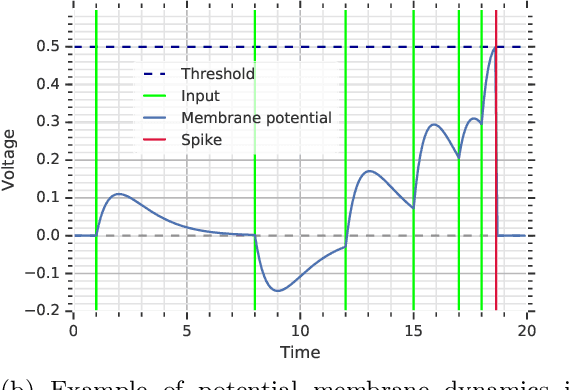
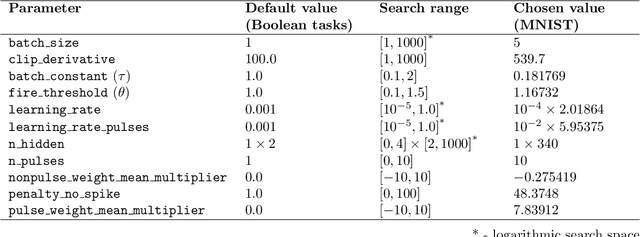


Abstract:The timing of individual neuronal spikes is essential for biological brains to make fast responses to sensory stimuli. However, conventional artificial neural networks lack the intrinsic temporal coding ability present in biological networks. We propose a spiking neural network model that encodes information in the relative timing of individual neuron spikes. In classification tasks, the output of the network is indicated by the first neuron to spike in the output layer. This temporal coding scheme allows the supervised training of the network with backpropagation, using locally exact derivatives of the postsynaptic spike times with respect to presynaptic spike times. The network operates using a biologically-plausible alpha synaptic transfer function. Additionally, we use trainable synchronisation pulses that provide bias, add flexibility during training and exploit the decay part of the alpha function. We show that such networks can be trained successfully on noisy Boolean logic tasks and on the MNIST dataset encoded in time. The results show that the spiking neural network outperforms comparable spiking models on MNIST and achieves similar quality to fully connected conventional networks with the same architecture. We also find that the spiking network spontaneously discovers two operating regimes, mirroring the accuracy-speed trade-off observed in human decision-making: a slow regime, where a decision is taken after all hidden neurons have spiked and the accuracy is very high, and a fast regime, where a decision is taken very fast but the accuracy is lower. These results demonstrate the computational power of spiking networks with biological characteristics that encode information in the timing of individual neurons. By studying temporal coding in spiking networks, we aim to create building blocks towards energy-efficient and more complex biologically-inspired neural architectures.
Noise generation for compression algorithms
Mar 24, 2018


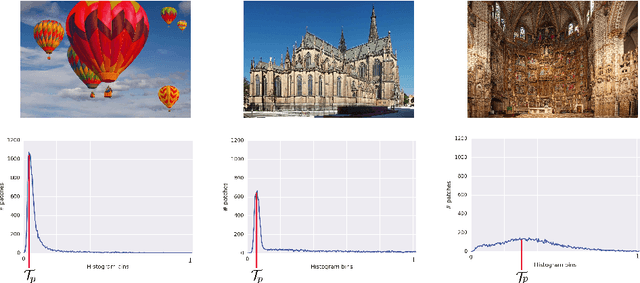
Abstract:In various Computer Vision and Signal Processing applications, noise is typically perceived as a drawback of the image capturing system that ought to be removed. We, on the other hand, claim that image noise, just as texture, is important for visual perception and, therefore, critical for lossy compression algorithms that tend to make decompressed images look less realistic by removing small image details. In this paper we propose a physically and biologically inspired technique that learns a noise model at the encoding step of the compression algorithm and then generates the appropriate amount of additive noise at the decoding step. Our method can significantly increase the realism of the decompressed image at the cost of few bytes of additional memory space regardless of the original image size. The implementation of our method is open-sourced and available at https://github.com/google/pik.
Guetzli: Perceptually Guided JPEG Encoder
Mar 13, 2017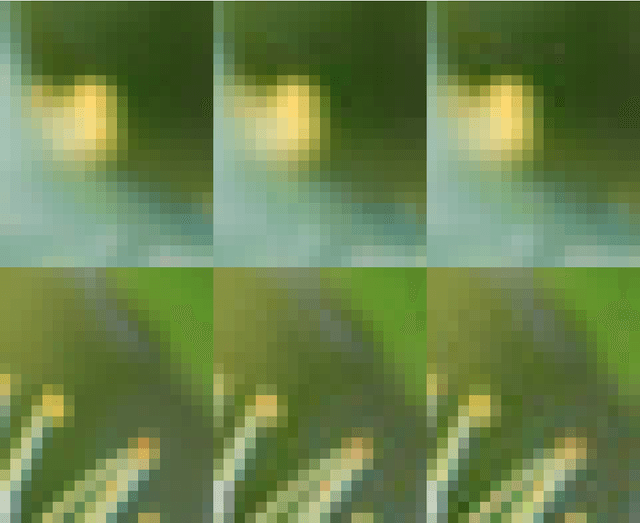
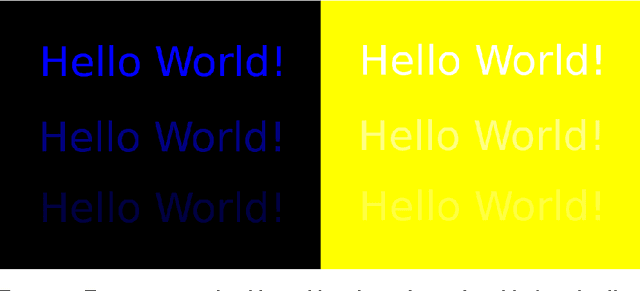
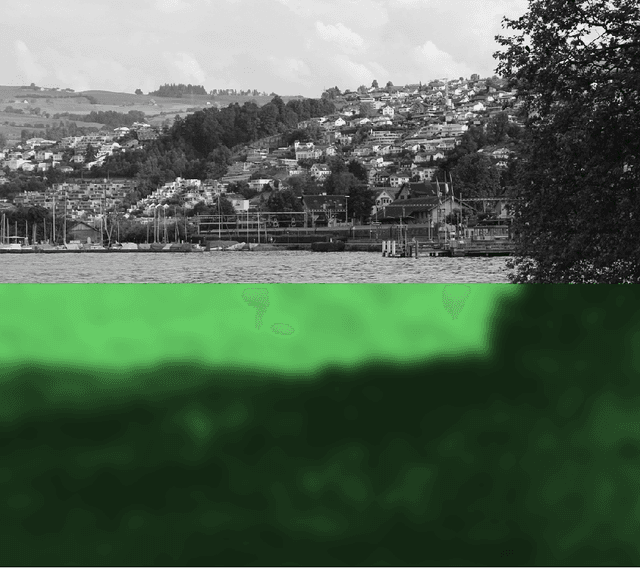
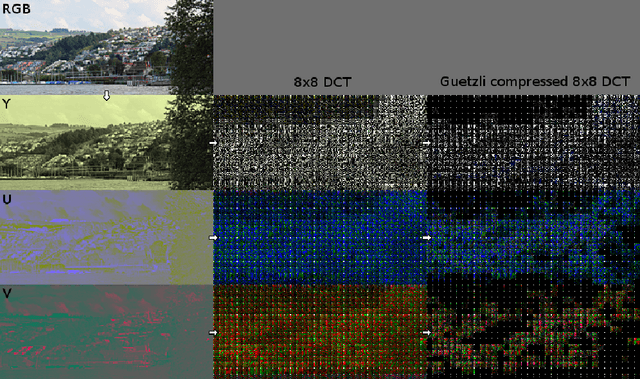
Abstract:Guetzli is a new JPEG encoder that aims to produce visually indistinguishable images at a lower bit-rate than other common JPEG encoders. It optimizes both the JPEG global quantization tables and the DCT coefficient values in each JPEG block using a closed-loop optimizer. Guetzli uses Butteraugli, our perceptual distance metric, as the source of feedback in its optimization process. We reach a 29-45% reduction in data size for a given perceptual distance, according to Butteraugli, in comparison to other compressors we tried. Guetzli's computation is currently extremely slow, which limits its applicability to compressing static content and serving as a proof- of-concept that we can achieve significant reductions in size by combining advanced psychovisual models with lossy compression techniques.
Users prefer Guetzli JPEG over same-sized libjpeg
Mar 13, 2017Abstract:We report on pairwise comparisons by human raters of JPEG images from libjpeg and our new Guetzli encoder. Although both files are size-matched, 75% of ratings are in favor of Guetzli. This implies the Butteraugli psychovisual image similarity metric which guides Guetzli is reasonably close to human perception at high quality levels. We provide access to the raw ratings and source images for further analysis and study.
 Add to Chrome
Add to Chrome Add to Firefox
Add to Firefox Add to Edge
Add to Edge